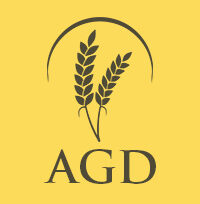Skip to the content
Below is a great excerpt from a recent Q&A session with international, multi-millionaire investor Doug Casey and author/analyst for Casey Research’s Crisis Investing publication Nick Giambruno. Doug and Nick answer questions about their personal asset allocations and give their thoughts on farmland as an asset class. Find my areas of interest in bold and comments in []
[QUESTION] WHAT IS YOUR PERSONAL ASSET ALLOCATION?
Doug Casey: I’m heavily in gold, to preserve capital. I own a lot of speculative resource stocks, because they’re very cheap now; I’ll sell them when they, too, become a bubble. I’m moving into commodities—grains and cattle are both quite cheap. [Argentina hosts of wide variety of agricultural opportunities at competitive prices, including cattle pasture land. Pasture land is available in the $400 – $1,200/acre range, depending on the quality of the soil and availability of water. In April 2016, Argentina’s beef exports were up 25% from April 2015, likely due in part to the USDA’s lifting of a 14-year hold on the importation of Argentine beef products. High quality, fattening pasture land is available for approximately $2,000/acre. Not counting the initial land investment and feed costs, it’s possible to yield a 40-45% annual ROI per head of cattle. Uruguay also offers an extremely developed and quality cattle operation. Uruguay’s beef products are 100% traceable (the only place in the world this occurs), export to over 150 world markets, and nearly all of their 12 million cows are raised on natural pastures and among superior quality and sanitation practices where hormones and antibiotics are forbidden.] And a lot of rural real estate, especially outside the US, because political risks are at least as great as market risks today.
Nick Giambruno: I own a lot of precious metals–related assets, some dividend aristocrats, some cash and some foreign real estate.
I am particularly fond of foreign real estate. I think of it like a diversification grand slam. [AG DTours believes in taking this one step further: owning agricultural land in a foreign country. It offers diversification, a tangle storage of wealth, income generation, and a level of protection from volatile US markets.]
Like a grand slam in baseball, owning foreign real estate is the most potent move possible in a single play. It accomplishes four goals at once…
1. Move Savings Abroad
Though it’s illiquid and has carrying costs, foreign real estate can function as a hard asset with diplomatic immunity. It’s an asset outside the immediate reach of your home government. It’s highly unlikely they can seize it.
2. Create Other Diversification Options
In most cases, owning foreign real estate in a country provides a valid justification for you to open a financial account in that foreign country (whereas you may not have been able to before). [Many of these same opportunities are available with the ownership of agricultural land as well]. Obtaining real estate in a foreign country usually gives you some sort of residency, sometimes a shortened path to citizenship, and, in the case of certain countries, like Dominica and St. Kitts and Nevis, immediate citizenship and a second passport. Owning foreign real estate provides you with a second home, potentially a place to retire and an emergency bolt-hole that you could, in an instant, always escape to in case of trouble in your home country.
3. Portfolio Diversification
Foreign real estate is a tangible hard asset that has diversification benefits for a traditional portfolio of stocks, bonds, precious metals, etc. It has the potential for capital appreciation as well as the ability to generate rental income in a currency other than the US dollar. [While an ag-based investment won’t generate rental income unless your investment also has a residence on it, it can generate income from the sale of the commodities it produces].
4. Privacy and Tax Benefits
Owning foreign real estate is one of the very few ways that Americans can legally keep some of their wealth abroad while retaining their financial privacy. If the foreign real estate is held directly in your name (i.e., not in a trust, LLC, real estate fund, partnership, etc.), it is not reportable (although any rental income must be reported). [There are just as many tax and business incentives with a Latin American-based agricultural investment. For more details, check out our white paper on the homepage of our website.]
I’ve personally invested in Colombian real estate. I also think Argentina is very attractive right now. With the election of a pro-market president, Mauricio Macri, there’s a good chance Argentina is also turning the corner to a brighter economic future. That, along with the incredible lifestyle, is why I’m now happily an owner at Doug’s La Estancia de Cafayate. I consider both Colombia and Argentina to be good examples of crisis investing in action.
[QUESTION] IS FARMLAND THE NEXT ASSET CLASS TO SHOOT UP, ALONG WITH GOLD, AND WHAT IS THE BEST WAY TO PLAY IT?
Doug Casey: Well, let me reemphasize that basically all the agricultural commodities are very cheap, and cattle are again very cheap. I think agricultural commodities are going much higher. Like the metals, they’ve been in a five-year bear market. Farmland I think will go up, too. [These are the precisely the types of opportunities AG DTours wants to provide you first-hand experience with in Latin America. The availability of US farmland is decreasing, prices are rising, and annual returns are falling. Latin American agriculture can by the alternative investment solution in which many US investors are seeking.]
Nick Giambruno: I think farmland is the ultimate hard asset. Like gold, its value can’t be diluted by central bankers. Unlike gold, it produces food, the most basic of human needs.
